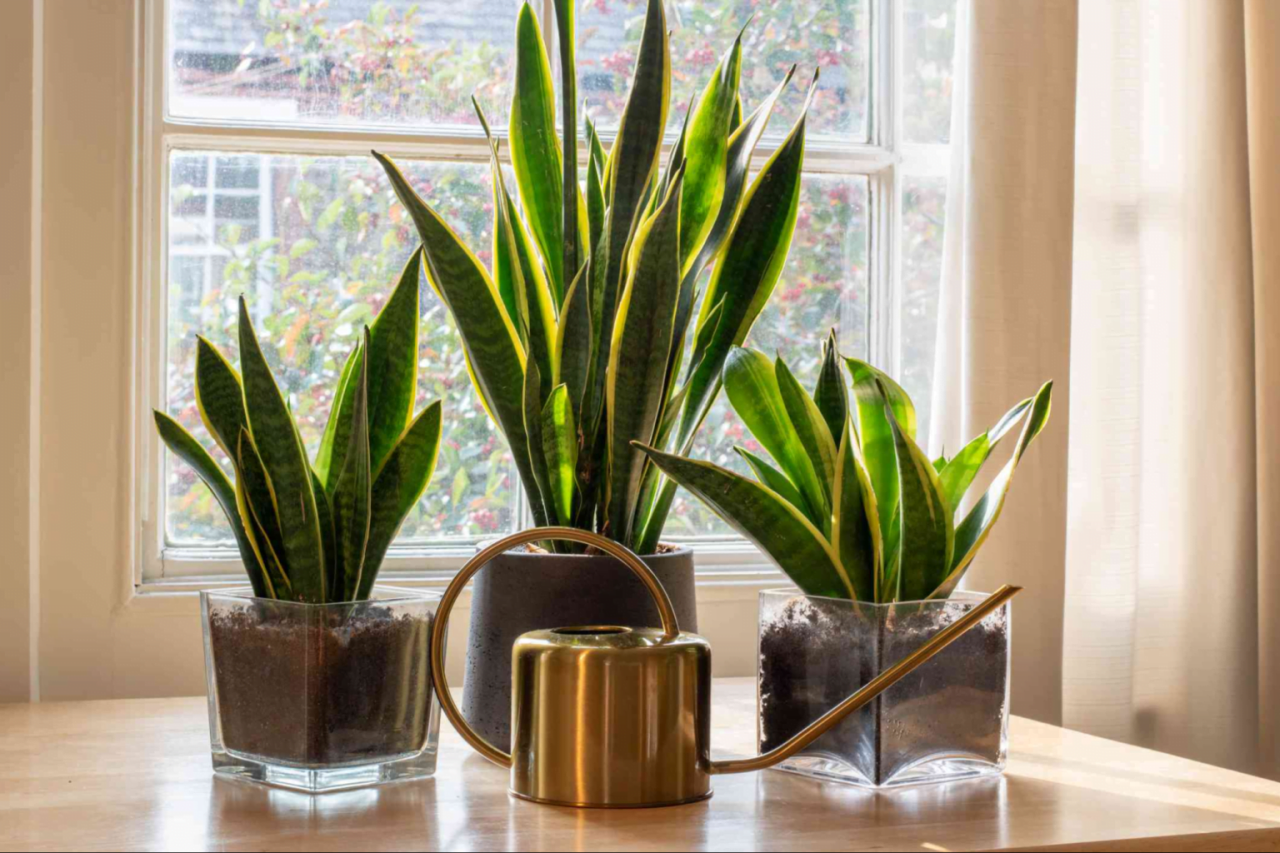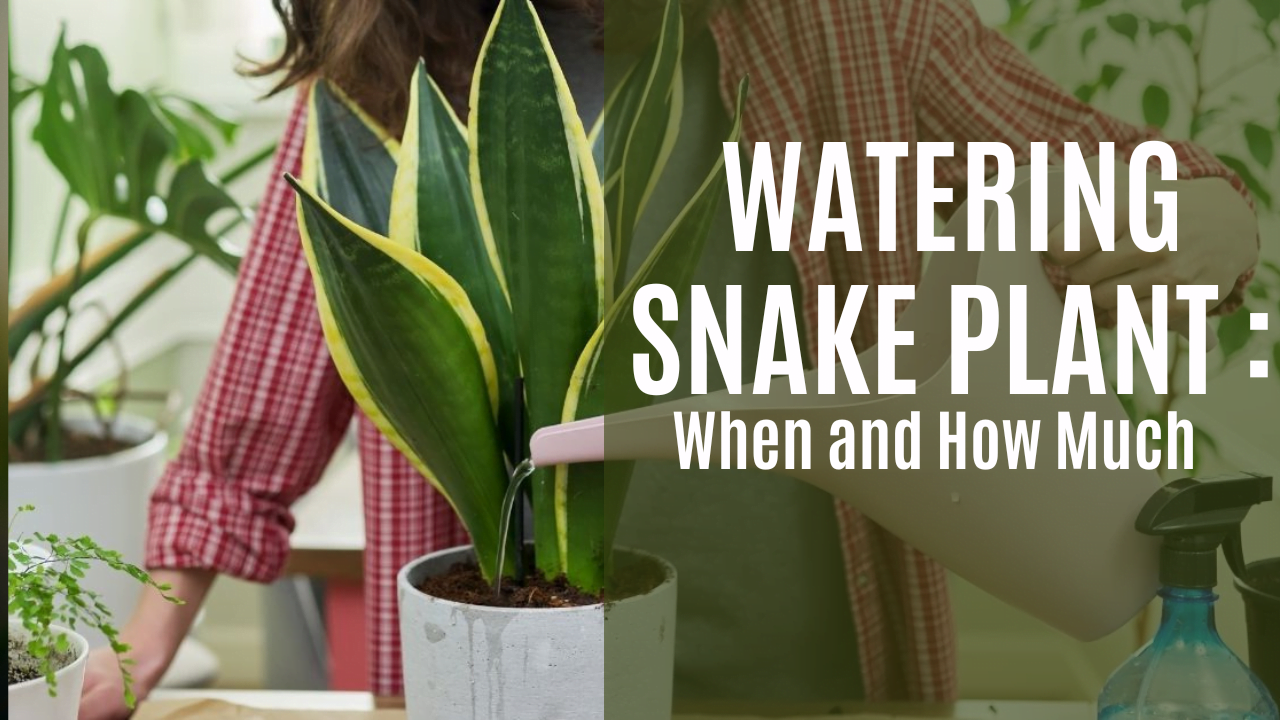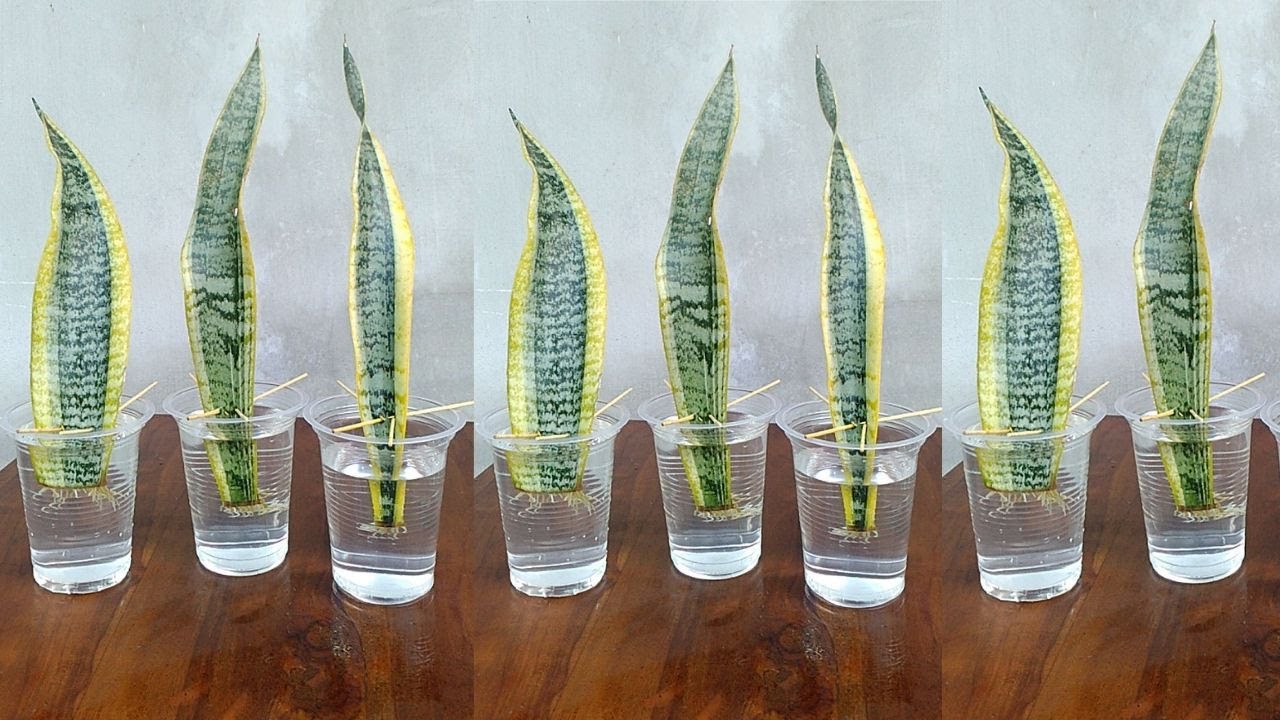The Ultimate Guide to Watering Your Snake Plant: These resilient plants are known for their ability to thrive in a variety of conditions, but even the hardiest snake plant needs the right amount of water to flourish. Understanding the unique water storage capabilities of snake plants, along with the ideal soil moisture levels, is crucial for keeping your plant healthy and vibrant.
This comprehensive guide will cover everything you need to know about watering your snake plant, from the basics of proper watering techniques to troubleshooting common watering issues. We’ll also delve into the impact of environmental factors on watering frequency, and provide practical tips for optimizing watering for healthy growth.
Understanding Snake Plant Watering Needs
Snake plants, also known as Sansevieria, are incredibly resilient and adaptable houseplants. One of their most notable traits is their ability to thrive even with infrequent watering. This resilience stems from their unique water storage capabilities, which allow them to survive periods of drought.
The Unique Water Storage Capabilities of Snake Plants
Snake plants have adapted to survive in arid environments, where water is scarce. Their thick, upright leaves act as reservoirs, storing water for extended periods. This water storage mechanism allows them to endure periods of drought and tolerate infrequent watering.
The Impact of Soil Type on Watering Frequency, The Ultimate Guide to Watering Your Snake Plant
The type of soil used for snake plants significantly impacts their watering needs. Well-draining soil is essential for snake plants, as it prevents water from accumulating around the roots, which can lead to root rot. Here are some soil types suitable for snake plants:
- Cactus potting mix:This mix is designed for succulents and cacti, providing excellent drainage and aeration. It typically contains a blend of peat moss, perlite, and vermiculite.
- Potting soil with added perlite or pumice:Adding perlite or pumice to regular potting soil improves drainage and aeration, making it more suitable for snake plants.
- DIY soil mix:You can create your own soil mix by combining equal parts potting soil, perlite, and coarse sand.
Ideal Soil Moisture Level for Snake Plants
The ideal soil moisture level for snake plants is slightly dry to the touch. Before watering, check the soil moisture by inserting your finger about an inch deep. If the soil feels dry, it’s time to water.
Remember:Overwatering is more detrimental to snake plants than underwatering. Allowing the soil to dry out slightly between waterings helps prevent root rot.
Just like the right pot can enhance the beauty and health of a bonsai tree, choosing the appropriate container for your snake plant can significantly impact its growth and overall appearance. Understanding the principles of proper container selection, as outlined in How to Choose the Right Bonsai Pot for Your Tree’s Shape , can be applied to snake plants as well.
By considering factors such as drainage, material, and size, you can create the ideal environment for your snake plant to thrive.
The Right Watering Technique

Watering your snake plant correctly is crucial for its health and growth. Overwatering is a common problem for snake plant owners, leading to root rot and other issues. This section will guide you through the best watering techniques to ensure your snake plant thrives.
Using Lukewarm Water
Lukewarm water is best for snake plants because it mimics the temperature of their natural environment. Cold water can shock the roots and hinder their ability to absorb nutrients. Here’s why lukewarm water is ideal:* Mimics Natural Conditions:Snake plants in their natural habitat experience warm temperatures, and lukewarm water helps maintain that consistency.
Enhances Root Absorption
Warm water promotes better nutrient absorption, allowing the plant to thrive.
Reduces Root Shock
Cold water can cause sudden temperature changes that can shock the roots, potentially leading to root damage.
Step-by-Step Watering Guide
Follow these steps for optimal snake plant watering:
- Check the Soil Moisture:Before watering, feel the soil with your finger. If the top inch of soil feels dry, it’s time to water.
- Use Lukewarm Water:Fill a watering can with lukewarm water.
- Thoroughly Water the Soil:Slowly pour water onto the soil, allowing it to soak into the pot until it drains out the drainage holes.
- Allow Excess Water to Drain:Let the excess water drain out completely. Do not leave the plant sitting in water, as this can lead to root rot.
- Wait for the Soil to Dry:Allow the soil to dry out completely before watering again. This usually takes about two weeks, depending on factors like temperature, humidity, and pot size.
Visual Guide: Watering Methods
Method 1: Top WateringThis method involves pouring water directly onto the soil surface.* Illustration:Imagine a snake plant in a pot. Water is being poured from a watering can onto the soil surface, gradually soaking the entire soil. The water is seen flowing down through the soil, eventually reaching the drainage holes at the bottom of the pot.
Excess water is draining out of the pot. Method 2: Bottom WateringThis method involves placing the pot in a tray of water, allowing the plant to absorb moisture from the bottom up.* Illustration:Visualize a snake plant in a pot, sitting inside a shallow tray filled with water.
The water level in the tray is slightly below the bottom of the pot. The snake plant is absorbing water from the tray through the drainage holes in the bottom of the pot. After some time, the soil in the pot becomes evenly moist.
Just like understanding the ideal pot material for your bonsai tree, as outlined in Bonsai Pot Materials: Which One is Right for Your Tree? , choosing the right pot for your snake plant can make a difference in its overall health and well-being.
The material and drainage of the pot will influence how quickly the soil dries out, which directly affects how often you need to water your snake plant.
Signs of Overwatering and Underwatering

While the snake plant is known for its resilience, overwatering and underwatering can negatively impact its health and appearance. Recognizing the signs of both extremes is crucial for maintaining a thriving plant. This section will delve into the visual cues indicating overwatering and underwatering, explaining their consequences and how to address them.
Overwatering
Overwatering is a common issue that can lead to root rot and other problems. It occurs when the soil remains too wet for too long, depriving the roots of oxygen.
- Yellowing leaves: This is often the first sign of overwatering. The leaves may turn yellow from the base and spread upwards, indicating that the roots are not getting enough oxygen.
- Soft, mushy leaves: Overwatering can cause the leaves to become soft and mushy, especially at the base. This is a sign that the leaves are rotting.
- Drooping leaves: Overwatered snake plants may exhibit drooping leaves, particularly if the soil is constantly soggy. This is a sign that the roots are struggling to absorb water and nutrients.
- Foul odor: A musty or rotten smell emanating from the soil indicates root rot, a serious consequence of overwatering.
Overwatering can have serious consequences for your snake plant, leading to:
- Root rot: This is the most common consequence of overwatering. The roots become damaged and unable to absorb water and nutrients. Root rot can be fatal if left untreated.
- Leaf discoloration: Overwatering can cause the leaves to turn yellow, brown, or even black.
- Stunted growth: Overwatered plants may struggle to grow and may even start to die back.
- Pest infestations: Overwatering can create a humid environment that attracts pests like fungus gnats.
Underwatering
Underwatering occurs when the soil is allowed to dry out completely for extended periods. While snake plants are drought-tolerant, prolonged dryness can still impact their health.
- Wilting leaves: Underwatering causes the leaves to become limp and floppy, as they lose their turgor pressure. This is a clear indication that the plant needs water.
- Brown, crispy leaf tips: Underwatering can lead to brown, crispy leaf tips, particularly on the older leaves. This is a sign of dehydration.
- Leaf curling: Underwatering can also cause the leaves to curl inwards, as the plant tries to conserve moisture.
- Stunted growth: Underwatered snake plants may experience stunted growth and may not produce new leaves as readily.
While underwatering is less severe than overwatering, it can still negatively affect your snake plant. Prolonged underwatering can lead to:
- Leaf drop: The plant may shed leaves to conserve water.
- Slow growth: Underwatering can stunt the plant’s growth and prevent it from reaching its full potential.
- Increased susceptibility to pests: A stressed plant due to underwatering is more vulnerable to pests and diseases.
Troubleshooting Common Watering Issues
Even with the best intentions, watering snake plants can sometimes go wrong. Understanding common problems and their solutions can help you keep your plant thriving. This section explores common watering issues and provides solutions to help you address them effectively.
Identifying and Addressing Common Watering Problems
- Yellowing Leaves:This could indicate overwatering or underwatering. If the leaves are soft and mushy, it’s likely overwatering. If the leaves are dry and brittle, it’s likely underwatering.
- Brown Tips:Brown tips are often a sign of underwatering. They can also occur due to low humidity, excessive fertilizer use, or fluoride in the water.
- Wilting Leaves:Wilting leaves are a clear sign of underwatering. If the leaves are drooping and feel limp, your snake plant needs water.
- Root Rot:Root rot is a serious problem that can occur when a snake plant is overwatered. Symptoms include yellowing leaves, wilting, and a foul odor from the soil.
Reviving an Overwatered Snake Plant
Overwatering is a common problem that can lead to root rot and other issues. If you suspect your snake plant is overwatered, take immediate action to revive it.
- Remove the Plant from the Pot:Gently remove the snake plant from its pot to assess the roots.
- Inspect the Roots:Look for signs of root rot, such as mushy or black roots. If you find any rotted roots, trim them off with clean, sharp scissors.
- Repot the Plant:Repot the snake plant in fresh, well-draining soil. Make sure the pot has drainage holes.
- Allow the Soil to Dry:Let the soil dry out completely before watering again. This will help prevent further root rot.
Addressing Underwatered Snake Plants
Underwatering can also be a problem for snake plants. If your plant is showing signs of underwatering, there are several ways to revive it.
- Water Thoroughly:Water the snake plant deeply, allowing the water to drain through the drainage holes.
- Submerge the Pot:If the soil is extremely dry, you can submerge the pot in a bucket of water for 15-20 minutes to allow the soil to absorb water evenly.
- Provide Humidity:Snake plants prefer a humid environment. You can increase humidity by placing a humidifier near the plant or by grouping it with other plants.
Optimizing Watering for Healthy Growth
While proper watering is crucial for snake plant survival, it also plays a vital role in maximizing their growth potential. Understanding the ideal watering schedule and incorporating additional techniques can help your snake plant thrive.
The Role of Fertilizer
Fertilizer provides essential nutrients that contribute to healthy growth and development. Snake plants are relatively low-maintenance and don’t require frequent fertilization. However, applying a balanced liquid fertilizer diluted to half strength during the growing season (spring and summer) can enhance their growth.
- Choose a balanced liquid fertilizer with an NPK ratio of 10-10-10 or similar.
- Dilute the fertilizer to half strength by mixing it with water according to the manufacturer’s instructions.
- Apply the diluted fertilizer to the soil around the base of the plant, avoiding direct contact with the leaves.
- Fertilize every 4-6 weeks during the growing season.
The Benefits of a Moisture Meter
A moisture meter is a valuable tool for monitoring soil moisture levels. It allows you to accurately determine when the soil is dry enough for watering, preventing overwatering or underwatering.
- Insert the moisture meter probe into the soil near the base of the plant.
- Read the moisture level indicated on the meter.
- Water when the meter reading indicates “dry” or “low” moisture.
Last Point: The Ultimate Guide To Watering Your Snake Plant

Mastering the art of watering your snake plant is a rewarding journey that leads to a lush and thriving plant. By following the guidelines Artikeld in this guide, you can ensure your snake plant receives the right amount of moisture, leading to optimal growth and a vibrant display of its striking foliage.
Remember, attentive observation and a bit of experimentation will help you determine the perfect watering routine for your unique plant.
Key Questions Answered
How often should I water my snake plant?
The frequency of watering depends on several factors, including the size of your plant, the type of soil, and the environmental conditions. Generally, snake plants should be watered thoroughly when the top inch of soil is dry.
What are the signs of overwatering?
Overwatering is a common problem with snake plants. Signs of overwatering include yellowing leaves, soft or mushy leaves, and a foul odor coming from the soil.
What should I do if my snake plant is underwatered?
If your snake plant is underwatered, it will likely have brown or crispy leaves. To revive an underwatered snake plant, simply water it thoroughly and allow the excess water to drain.
